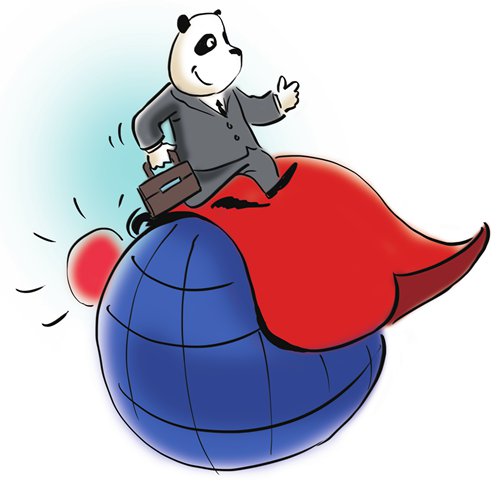
Illustration: Liu Rui/GT
Since 1840, the worldview of Chinese people has undergone four major changes. During the later years of the Qing Dynasty (1644-1911), intellectuals realized that China had much to learn from the West, particularly in technology. In the early 20th century, China found that it could no longer be self-centered and had to turn to the West for the development needs of the country.
After the People's Republic of China was founded in 1949, it sided with the socialist camp led by the Soviet Union and learned extensively amid diplomatic isolation and an economic blockade imposed by the West. Around 1978 when Deng Xiaoping launched the reform and opening-up, China started attracting Western investment and introducing Western science and technology along with management practices.
Through that period, the West was a role model to China. But it was toppled from its plinth after the global financial crisis of 2008. As China proposed the Belt and Road initiative in 2013, it started learning to interact with the world on an equal footing and the boot was on the other foot: It had more to give to the world in terms of learning than take from it. It was the first time China exported a new foreign policy idea and concept of global governance, which demonstrated the pride of the Chinese people in the rejuvenation of the nation.
For a long time, the Chinese unknowingly kept pace with the West. Western countries like the US, nations of Western Europe, Japan and South Korea were the primary choices when people wanted to travel or study international relations. But after the initiative was launched, people began focusing on regions beyond the West - the Middle East, Central Africa, North Africa, Latin America and Central and Eastern Europe.
By the end of 2016, there were more than 1,000 kinds of books and more than 10 million media reports about the initiative and countries involved. Research reports and books on the topic by think tanks worldwide reached 3,000.
Countries involved in the Belt and Road initiative became increasingly attractive destinations for outbound Chinese tourists. In 2016, Chinese made more than 130 million overseas visits. Thailand was the most popular travel destination with nearly 9 million visits. Malaysia, Sri Lanka and the Maldives along the ancient Silk Road ranked high on the priority list. The number of Chinese tourists to Iran, Turkey and Egypt grew far more quickly than to the US and European countries. In recent years, China has worked with these countries to hold a "tourism year" and tourism conferences, showing a broader outlook on the world.
China's educational assistance to and cultural cooperation with countries on the Belt and Road has grown fast. China provides 10,000 government-backed scholarships to these countries every year. China has held 20 exchanges programs and signed 43 intergovernmental cooperation deals. By the end of 2016, China had set up 30 Chinese culture centers overseas. China's cultural cooperation with countries along the Belt and Road has progressed remarkably.
The Belt and Road initiative involves not only economic and policy connectivity, but also closer people-to-people ties. The Chinese people have formed their own worldview to become global citizens. They are mentally integrating with the whole world - not just the West - in an all-round way and being recognized and accepted globally.
China learned well from the developed countries. But things have changed. More and more Western pundits and elites now increasingly call on the West to learn from China. Likewise, emerging economies and other developing countries in Africa and Latin America are keen to introduce China's development experiences.
China should neither underestimate its capabilities nor be overly humble about this. China should impart the gist of its theories and development paradigms to the world.
When I teach China's unique development experiences to government officials, scholars and entrepreneurs from dozens of countries, more than often they find these lessons particularly enlightening and helpful. It is critical for China to tell its stories overseas in this new era when the Belt and Road initiative has been well recognized globally. China's academia and think tanks should be more confident about improving the nation's its philosophy and social sciences. China should seek to stand out in the global competition for knowledge.
China also needs to learn from the merits of the non-Western world. Continuous learning will help drive China's sustainable development and embody the spirit of the Silk Road.
The Belt and Road initiative has enhanced China's global influence and in turn reshaped the image of China and Chinese society. This presents a new mission. Every Chinese resident should learn to eye the globe and keep up with national development, and behave like the citizen of a global power.
The author is dean of the Chongyang Institute for Financial Studies at Renmin University of China. The article is an excerpt of the preface to his new book A Promising China. opinion@globaltimes.com.cn



